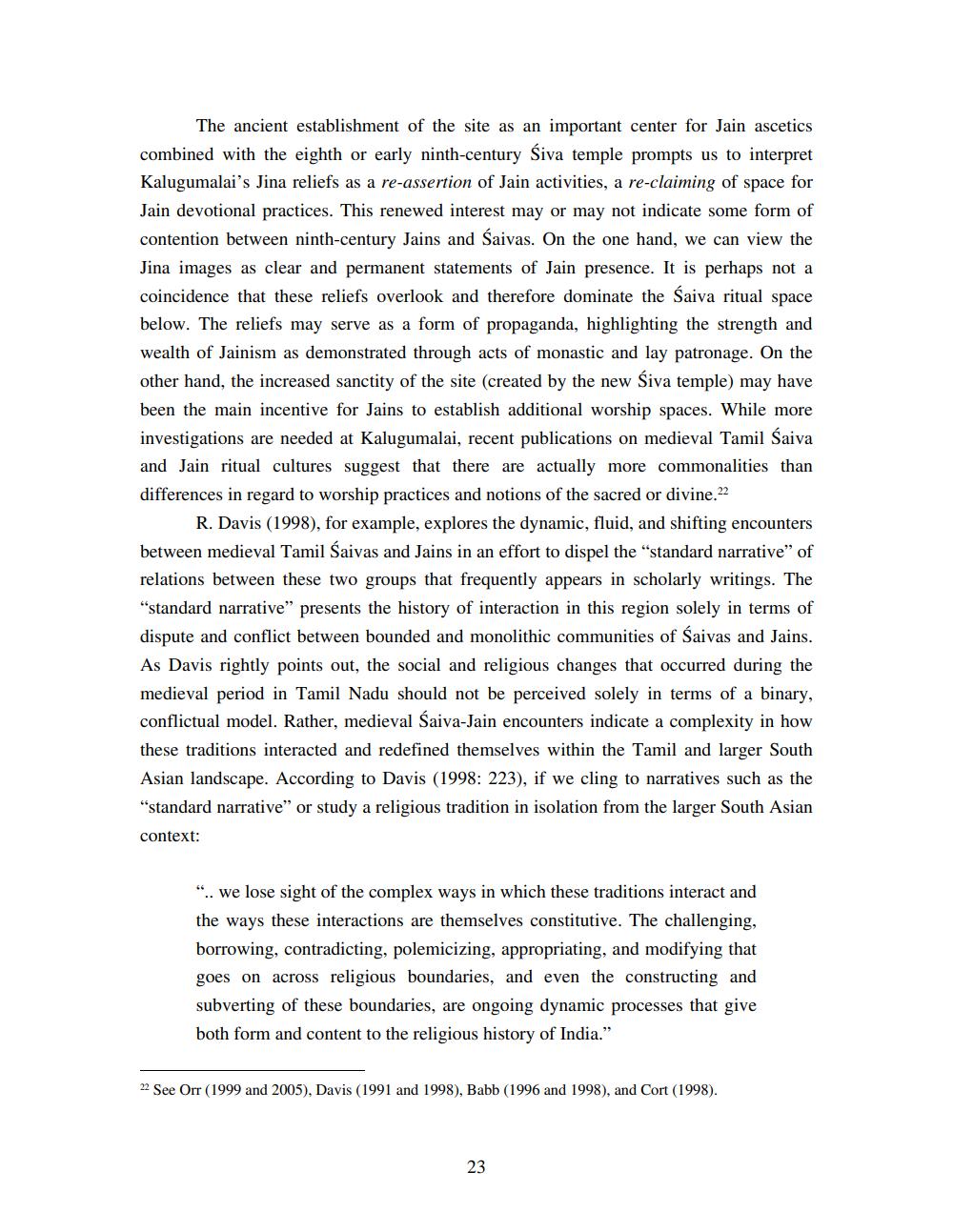________________
The ancient establishment of the site as an important center for Jain ascetics combined with the eighth or early ninth-century Śiva temple prompts us to interpret Kalugumalai's Jina reliefs as a re-assertion of Jain activities, a re-claiming of space for Jain devotional practices. This renewed interest may or may not indicate some form of contention between ninth-century Jains and Saivas. On the one hand, we can view the Jina images as clear and permanent statements of Jain presence. It is perhaps not a coincidence that these reliefs overlook and therefore dominate the Saiva ritual space below. The reliefs may serve as a form of propaganda, highlighting the strength and wealth of Jainism as demonstrated through acts of monastic and lay patronage. On the other hand, the increased sanctity of the site (created by the new Śiva temple) may have been the main incentive for Jains to establish additional worship spaces. While more investigations are needed at Kalugumalai, recent publications on medieval Tamil Saiva and Jain ritual cultures suggest that there are actually more commonalities than differences in regard to worship practices and notions of the sacred or divine.22
R. Davis (1998), for example, explores the dynamic, fluid, and shifting encounters between medieval Tamil Saivas and Jains in an effort to dispel the "standard narrative" of relations between these two groups that frequently appears in scholarly writings. The "standard narrative" presents the history of interaction in this region solely in terms of dispute and conflict between bounded and monolithic communities of Saivas and Jains. As Davis rightly points out, the social and religious changes that occurred during the medieval period in Tamil Nadu should not be perceived solely in terms of a binary, conflictual model. Rather, medieval saiva-Jain encounters indicate a complexity in how these traditions interacted and redefined themselves within the Tamil and larger South Asian landscape. According to Davis (1998: 223), if we cling to narratives such as the "standard narrative" or study a religious tradition in isolation from the larger South Asian
context:
".. we lose sight of the complex ways in which these traditions interact and the ways these interactions are themselves constitutive. The challenging, borrowing, contradicting, polemicizing, appropriating, and modifying that goes on across religious boundaries, and even the constructing and subverting of these boundaries, are ongoing dynamic processes that give both form and content to the religious history of India."
22 See Orr (1999 and 2005), Davis (1991 and 1998), Babb (1996 and 1998), and Cort (1998).




